The primary focus of this discussion is on RS-485/RS-422 cables and signals, but the discussion also applies to telephone, audio, video, and computer-network signals.
Common-Mode Signals Defined
When referenced to the local common or ground, a common-mode signal appears on both lines of a 2-wire cable, in-phase and with equal amplitudes. Clearly, a common-mode signal cannot be present if one of the lines is connected to local common. Technically, a common-mode voltage is one-half the vector sum of the voltages from each conductor of a balanced circuit to local ground or common. Such signals can arise from one or more of the following sources:- Radiated signals coupled equally to both lines,
- An offset from signal common created in the driver circuit, or
- A ground differential between the transmitting and receiving locations.
Further details about these basic conditions appear in a later section. Before examining those details, however, it is useful to understand different cable configurations, signal-grounding conventions, and shield-grounding practices.
General Data-Transmission System
The principal aim of any data-transmission system is to send data from one location to another, whether within a single box or enclosure, between boxes within an enclosure, between enclosures within a building or defined area, or between buildings. Figure 1 illustrates an RS-485 signaling situation in which the buildings are supplied from different power circuits.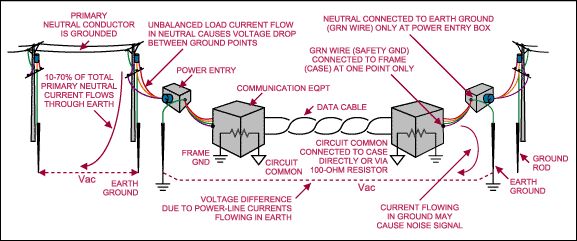
Figure 1. This generalized system transmits data between two widely separated buildings, and shows the earth currents created between ground points in a single-phase power-distribution system. Similar currents are created in 3-phase, Y-connected systems.
Bonding a power-line subscriber's neutral line to a ground rod sunk in the earth at the power-entry point establishes the power-line neutral as a safety ground. From that point, a bare or green-insulated wire carries the safety-ground reference to all electrical outlets and installed equipment throughout the premises. Industrial chassis frames are bonded to the safety ground at the chassis' power-input point, where it becomes frame ground.
Circuit common is often connected to the chassis at one or more points, but a single ground point per chassis is best. In some cases, the circuit common might be isolated from the frame ground. Leakage currents that flow in the safety-ground wire from machine windings to the case, or more commonly, that flow between the ground and earth due to AC primary or secondary neutral currents in the power-distribution system, can produce a potential difference between the neutral and frame ground.
Ground differentials can vary from several volts to several tens of volts. The greatest differentials are found in single-phase or 3-phase Y-distribution systems, in which the portion of neutral current flowing in the earth can be 10% to 70% of the total neutral current flowing in the primary circuit. Voltage measurements between ground points are typically 0.2VRMS to 5VRMS, and (rarely) as high as 65VRMS between widely separated grounds.
Cables and Noise
Noise signals can appear in a cable for several reasons: capacitive coupling of nearby electric fields (E); inductive coupling of local magnetic fields (M); electromagnetic coupling of radio signals in space (EM); and conduction through intentional or sneak circuit paths (C). The coupled signal appears as an additional signal in series with the line or lines (Figure 2). Table 2 lists the type and origin of potential noise sources in cables. Twisted-pair lines intercept coupled signals equally, so the incident signals appear only as common-mode signals. Twisted-pair lines are said to be balanced if the impedances connected from each line to the local common are identical.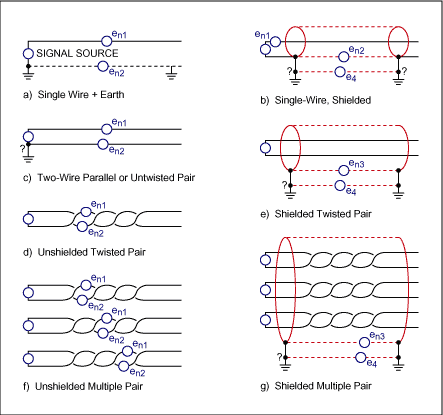
Figure 2. These transmission-cable configurations show the locations of possible noise sources.
Table 1. Electrical Cable Types and Applications
Table 2. Noise Sources for Listed Cable Configurations
Circuit and Shield Grounding
Single line with earth return: The signal common line connects to earth ground at the source and load by the earth (frame) return path. Circuit commons must also be connected to the earth (frame) ground.Single-wire shielded: Signal current is always carried on the shield, so connections to the circuit common must be present at both source and load. Table 3 lists the shield-grounding connections for various conditions.
Table 3. Shield Grounding for Single-Wire Shielded Cables
Two-wire parallel: Each conductor carries an equal amount of signal current, but in opposite directions. Table 4 lists line-grounding connections for various conditions.
Table 4. Line Grounding for Two-Wire Parallel Cables
Unshielded twisted pair(s): Any driving or receiving circuit probably includes a connection to local common or frame ground, but connecting the transmission line itself to frame ground is unnecessary and undesirable. A differential-mode or balanced-signal source (such as unshielded RS-422 and RS-485 data-transmission circuits) transmits data signals to a remote location where source and load circuits are both referenced to local ground or common. Transformer-coupled applications include 10/100 Base-T Ethernet cables.
Shielded twisted pair(s): Grounding the shield of any shielded pair shunts to ground any unwanted signals or noise intercepted by the shield. Typical shield materials (copper and aluminum) shield the internal conductors from signals coupled capacitively or electromagnetically, but not from those coupled inductively.
For any shielded pair(s) carrying balanced signals, you should connect the shield to ground at one end, usually the receiving end. If the transmitting-location ground carries a noise signal different from that at the receiving location, grounding the shield at both ends causes current flow along the shield. Grounding at both ends is acceptable if there is no substantial potential difference between the two ground locations. This configuration includes shielded RS-422 and RS-485 data-transmission circuits. RS-485 Application Guidelines specify connecting the shield to earth ground, either directly or through a fusible resistor at one or both ends of the cable shield.
Signal-Mode Definitions
Electrical signals carried on cables can be described as normal mode, differential mode, or common mode.- A normal-mode signal is any type (other than common mode) that appears between a pair of wires, or on a single wire referenced to (or returned through) the earth, chassis, or shield. Normal-mode signals are read between two wires in a balanced or unbalanced transmission path. (For a balanced 2-wire path, one wire is driven positive while the other is driven negative by an equal amount, both with respect to a static or no-signal condition in which both lines assume the same voltage level relative to circuit common.)
- A differential-mode signal appears differentially on a pair of wires in an ungrounded cable configuration.
- A common-mode signal appears equally (with respect to local circuit common) on both lines of a 2-wire cable not connected to earth, shield, or local common. Usually, but not always, this is an unwanted signal that should be rejected by the receiving circuit. Common-mode voltage (VCM) is expressed mathematically as the average of the two signal voltages with respect to local ground or common:

Figure 3 shows a 3V differential-mode signal riding on a 2.5V common-mode signal. The DC offset is typical of differential-mode data transmitters operating from a single supply. The common-mode voltage can be AC, DC, or a combination of AC and DC. (Figure 3 represents the simplest case, a DC common-mode voltage with no AC component.)
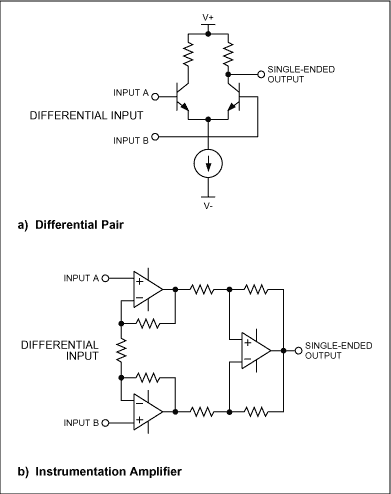
Figure 3. Typical RS-485 transmitters generate a common-mode DC offset voltage as shown.
When cables are long (as RS-485 data cables can be), the originating signal's common or ground may not have the same electrical potential as that of the receiving location. The RS-485 specification says to connect the drive-circuit common to frame ground, either directly or through a 100
 resistor. The result is illustrated in Figure 4.
resistor. The result is illustrated in Figure 4.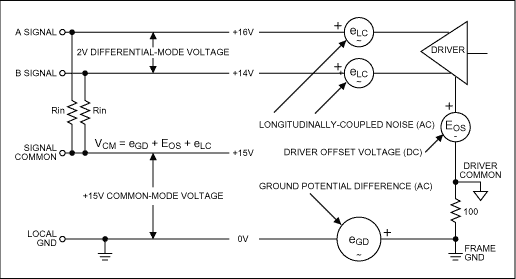
Figure 4. Three types of common-mode signal (eGD, eLC, and EOS) can be present in a 2-wire data-transmission system.
Signal common can assume a common-mode voltage equal to the vector sum of the ground-potential difference, the driver-offset voltage, and any longitudinally coupled noise voltage generated along the signal path between transmitter and receiver:

The Origin of Common-Mode Signals
Three sources of common-mode voltage are represented in Figure 4 as eGD, eLC, and EOS:- EOS is typically a DC offset introduced by a differential-mode driver operating from a single supply, as represented in Figure 3.
- eGD is a noise signal representing the difference in ground potentials at the transmitting and receiving locations. It is usually an AC signal containing the fundamental and possibly several harmonics of the power-line frequency.
- eLC is a longitudinally coupled noise signal occurring equally on both transmission lines due to capacitive, electromagnetic, or inductive coupling from extraneous sources.
Minimizing Common-Mode Signals
EOS can be made quite small, or even zero, by operating a differential-mode driver from balanced supplies. In contrast, eGD can be minimized only by maintaining a relatively short distance between the transmitting and receiving locations. eLC can be minimized by using a shielded twisted pair: noise introduced within the cable arises equally on each of two tightly twisted wires. Otherwise, a normal-mode signal would be present due to the line's asymmetry with respect to disturbing fields.The load must also be symmetrical; the resistive and capacitive load impedances on both lines of the twisted pair must be matched. Inductively coupled signals can be prevented only by using magnetic shielding. (Note that any wire carrying signal current is a source of magnetic radiation.)
Suppressing Common-Mode Signals
Common-mode signals (VCM) must be rejected in the receiving circuit. That rejection is easily accomplished when the receiving circuit is passive (headphones or loudspeaker), transformer coupled, isolated and battery operated, or otherwise not referenced in any way to the transmitting-circuit common (either capacitively or resistively connected). The configurations noted here are inherently immune to common-mode signals, but receiving circuits referenced to the transmitting-circuit common must be designed to accept the full range of VCM presented to them. All such designs involve differential receivers with high common-mode-rejection (CMR). If the VCM is of relatively low amplitude, a high-CMR receiver alone may be adequate.How High-CMR Receivers Work
All high-CMR receivers employ either some form of differential pair, or a traditional instrumentation amplifier consisting of three amplifiers, as indicated in Figure 5. Each amplifier accepts a differential input in the presence of a limited common-mode voltage, with an acceptable VCM limited to somewhat less than the supply voltages. Such circuits can handle analog and digital signals.
Figure 5. These differential-amplifier circuits exhibit high common-mode rejection.
Additional isolation must be employed if VCM is to exceed the receiver's common-mode range. Most such circuits employ a transformer-coupled isolated supply, plus any one of the following:
- Optically coupled circuits
- Capacitively coupled differential circuits
- Inductively coupled circuits
- Resistively coupled differential circuits
All the techniques shown in Figure 6 can couple a signal across the isolation barrier in the presence of high values of VCM. Each depends on the use of an isolated power supply, which is usually transformer coupled. Isolation voltage limits are determined by the transformer and by the type of isolation chosen. Isolation to 2500V or more is practical with transformer-, optical-, and capacitive-coupling techniques; resistive coupling is usually limited to the range of 50V to 100V.
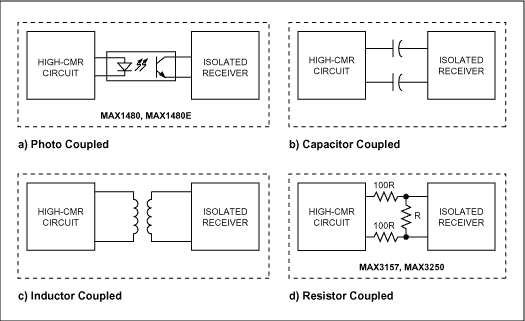
Figure 6. The isolation techniques and typical components shown achieve high common-mode-signal rejection.
Resistive coupling involves transferring data across a resistive attenuator, which attenuates both the data and the common-mode signals. Thus, resistive isolation is limited by the fraction of VCM that can be accommodated by the receiving circuit, while reliably detecting a small fraction of the original data signal.
In Figure 6, the various isolation drivers treat the requirement for isolated power in different ways. Today's inductively-coupled devices make no provision for the power supply, and therefore require external isolated supplies. Some capacitor-coupled devices include transformer drivers, but they require external transformers. Maxim's MAX3157 and MAX3250 drivers contain isolated supplies and require external, low-profile, ceramic charge-pump capacitors. Members of the MAX1480 and MAX1480E families, however, contain fully isolated supplies including transformers.
Thus, you can choose the cable type and isolation technology intelligently, once the source and magnitude of an intruding common-mode signal is known. You need only measure or calculate the magnitude of the disturbing signals, and then select your components to meet the overall requirements of the system.
References
- From a 1995 survey of 48 utilities, by the Minnesota Public Utilities Commission: http://www.strayvoltage.org/stories/index.php3?Story=20000213_attorneygeneral.inc
- Documented information is difficult to discover. The cited numbers were obtained in private communication with engineers at BC Hydro Power, British Columbia, Canada.
- TIA/EIA TELECOMMUNICATIONS SYSTEMS BULLETIN TSB89, Application Guidelines for TIA/EIA-485-A, Telecommunications Industry Association, June 1998
- TIA/EIA STANDARD TIA/EIA-485-A, Electrical Characteristics of Generators and Receivers for Use in Balanced Digital Multipoint Systems, Telecommunications Industry Association, March 3, 1998.